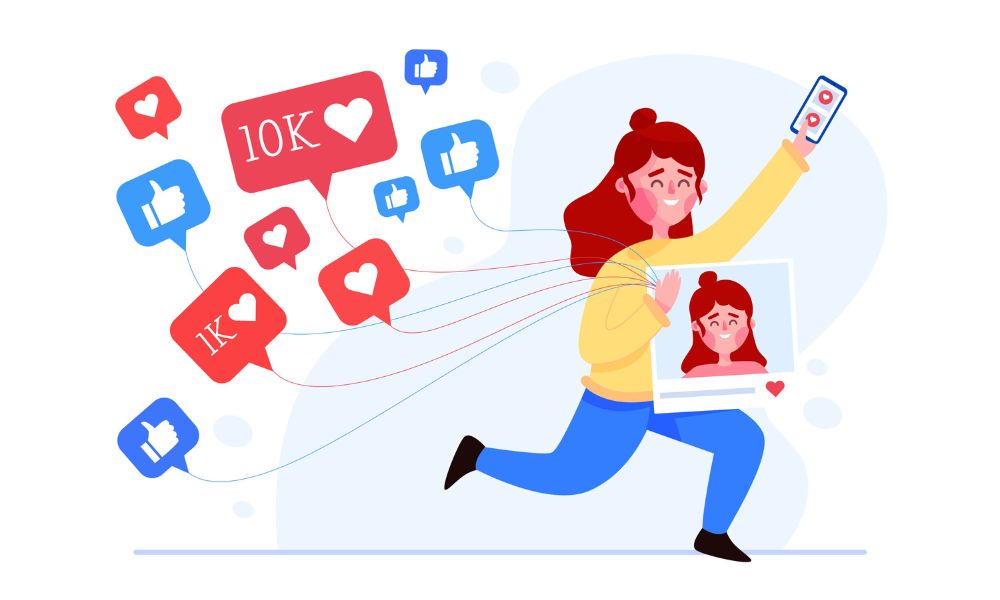When planning an influencer marketing campaign, choosing the right tier of creators can make or break your results. The two most commonly debated options for brands today are nano influencers vs micro influencers. Both can drive strong engagement, but they play different roles depending on your goals, budget, and audience.
In this guide, we’ll break down the key differences between nano and micro influencers, their strengths, when to use each, and why many brands are shifting toward smaller creators to drive better performance. Understanding these two tiers will help you make smarter choices with less guesswork.

Defining Nano and Micro Influencers
Influencer tiers aren’t just based on follower count, they reflect how creators connect with their audiences and what kind of impact they bring to a campaign.
What Is a Nano Influencer?
A nano influencer is a content creator with a small but highly engaged following, typically between 1,000 and 10,000 followers. These creators often maintain personal, one-to-one interactions with their followers, which translates into stronger engagement and more authentic feedback. Their content tends to feel personal, relatable, and unfiltered, which is why many brands turn to them when they want real feedback or to build grassroots visibility.
Why brands choose nano influencers:
- More likely to respond to followers and engage in comments
- Often work with fewer brands, so promotions feel exclusive
- Ideal for hyper-targeted campaigns or local activations
- Cost-effective for small budgets or product gifting
What Is a Micro Influencer?
A micro influencer has a larger (but still targeted) audience, usually between 10,000 and 100,000 followers. These creators have more reach than nano influencers but still maintain a relatively tight-knit audience. They often focus on a specific niche like wellness, tech, travelling, fashion, or fitness, making them great for brands that want relevance and authority within a particular space.
Why brands choose micro influencers:
- Wider reach with targeted niche content
- Higher-quality production and storytelling
- Good balance of engagement and exposure
- Often experienced in partnerships and campaign briefs
💡Need creators with lifestyle appeal? Hire top social media influencers across TikTok and Instagram in minutes.
Nano Influencers vs Micro Influencers: Key Differences That Matter
Nano and micro influencers offer distinct strengths depending on your campaign goals. Below are the key factors to help you choose the right fit.
1. Audience Size & Engagement Rates
Nano influencers usually have smaller, more connected audiences, and that shows in the numbers. Despite their limited reach, they often achieve engagement rates between 8–10%, making them powerful for generating real interaction.
Micro influencers have broader reach, typically between 10K–50K followers. Their engagement rates usually fall around 2–4%, but they offer a strong balance of reach and interaction, especially in campaigns targeting specific interests or verticals.
What sets these two tiers apart isn’t just how many people they reach, but how often those followers take action. If you want higher comment, save, or share activity per post, nano influencers tend to deliver. If your goal is scaling reach with consistent, mid-level engagement, micro influencers can do the job without the drop-off seen in larger tiers.
Takeaway:
Choose nano influencers when engagement quality matters most. Choose micro influencers when you need to balance targeted reach with steady interaction.
2. Cost & ROI Comparison
Nano influencers are usually more affordable and often accept free products in exchange for content. This makes them ideal for campaigns with limited budgets or when you want to test different creator partnerships at scale.
Micro influencers typically charge more, especially if they offer high-quality content or have a well-defined audience. However, they also tend to bring a higher level of professionalism and may include performance tracking tools or polished media kits.
Takeaway:
Nano campaigns cost less and allow for broader experimentation. Micro campaigns may cost more upfront but can deliver consistent results when targeting specific buyer personas.
3. Niche Authority & Trust
Nano influencers typically post casual, day-in-the-life content that feels natural and unfiltered. Their audience often sees them as relatable peers rather than promotional voices. This style makes them ideal for creating user-generated content (UGC), gathering feedback, and showcasing how a product fits into everyday routines.
Micro influencers, on the other hand, tend to develop more curated content, including tutorials, reviews, or opinion-based posts, that align with a clear niche. Whether they focus on skincare, wellness, tech, or travel, their audience expects insights, guidance, or inspiration rooted in real experience. This gives micro influencers an edge when your product needs explanation or context.
Takeaway:
Nano influencers are great for creating informal content that sparks trust and conversation. Micro influencers are better for delivering targeted messages that educate or inspire action within a specific niche.
4. Campaign Scalability
One of the biggest differences between these two tiers is the ability to scale. Because nano influencers work independently and at a lower cost, brands often partner with dozens at once to amplify reach across many micro-communities. This creates more touchpoints and helps spread awareness organically.
Micro influencers, while fewer in number per campaign, allow for greater content control and a stronger individual presence per post. Their ability to manage creative briefs and deliver on-brand messaging makes them ideal for structured campaigns.
Takeaway:
Use nano influencers when you want broad, grassroots visibility across multiple small audiences. Use micro influencers when you need more structured partnerships with measurable campaign outputs.
Key Differences at a Glance
Here’s a quick comparison to help you see how nano and micro influencers stack up:
| Feature | Nano Influencers | Micro Influencers |
| Follower Count | 1K–10K | 10K–50K (sometimes up to 100K) |
| Engagement Rate | Very high (up to 8–10%) | Moderate (1.5–4.6%) |
| Audience Relationship | Personal, loyal | Niche-specific, semi-personal |
| Content Style | Casual, authentic | Niche-focused, more polished |
| Brand Saturation | Low | Moderate |
| Cost per Post | Low to free (product gifting) | Moderate ($100–500+) |
| Best Use Cases | Local promos, UGC, product trials | Awareness, niche targeting |

When to Use Nano vs. Micro Influencers
Not every campaign needs a massive reach or a polished creator. The best results often come from aligning your influencer tier with your campaign goals. Here’s how to determine when to work with nano influencers, micro influencers, or both.
Best Situations for Nano Influencers
Nano influencers are a smart choice when you want to build trust, gather feedback, or generate authentic content. Because their audience is smaller and highly engaged, they’re ideal for grassroots campaigns where personal connection matters more than volume.
Use nano influencers when:
- You’re targeting a specific location or community
- You want to collect user-generated content (UGC) for repurposing
- Your product is new and needs credible social proof
- You have a limited budget but want multiple creators involved
- You’re running gifting or product seeding campaigns
Their followers trust them as peers, making them ideal for campaigns focused on relatability and real product use.
Best Situations for Micro Influencers
Micro influencers strike the balance between reach and relevance. They’re effective when you want to connect with a niche audience at scale, especially in industries like wellness, fashion, parenting, or SaaS.
Use micro influencers when:
- You need to build brand awareness with a niche audience
- You’re launching a product that benefits from strong visual storytelling
- You want higher-quality, campaign-ready content
- You need creators who are comfortable with structured briefs and timelines
- You’re tracking ROI through affiliate links or promo codes
Micro influencers often come with more experience and polished delivery, which helps maintain brand consistency across content.
Combined Campaign Approach
Many brands see the best results by combining both tiers. A hybrid campaign might include several nano influencers to drive organic engagement and UGC, along with a few micro influencers to provide niche reach and professional content.
This approach allows you to:
- Maximize touchpoints across different audience sizes
- Blend authenticity with content polish
- Test which tier delivers better ROI for your product or market
- Build a scalable model without over-relying on one creator type
Pro tip: Be careful not to assign overlapping deliverables or audiences when mixing tiers. Clear segmentation helps avoid content fatigue and makes tracking easier.
How to Find Nano & Micro Influencers
Finding the right creators is just as important as deciding which tier to work with, and finding the right nano and micro influencers for your brand can be time-consuming, but with the right approach, you can build a high-performing influencer network. Whether you’re looking for 5 trusted voices or 50 content partners, having the right strategy and tools in place makes all the difference.
Manual Search Methods
You can manually explore platforms like Instagram and TikTok by searching relevant hashtags, keywords, or geotags. This method works best when you have time to review profiles and want to handpick creators.
However, it’s time-consuming and hard to scale, especially if you’re managing dozens of creators across regions or campaigns.
- Social Media Hashtags & Geotags
- Search niche hashtags (e.g., #SustainableFashion, #IndieBeauty).
- Check location tags for local influencers.
- Competitor & Industry Analysis
- Look at who engages with competitors’ posts.
- Identify influencers in your niche through tools like Instagram’s “Suggested” feature.
- Engagement Rate Checks
- Use free tools to verify authenticity.
- Avoid fake followers, prioritize creators with real conversations in comments.
💡Need help writing your first message? Check out our guide on how to reach out to influencers professionally.
Use Hypefy’s Influencer Discovery Tool
For faster, smarter results, platforms like Hypefy offer AI-powered influencer discovery designed specifically for brand campaigns.
Unlike static databases, Hypefy doesn’t limit you to a fixed list of creators. Instead, it sources active influencers directly from Instagram and TikTok based on your campaign brief, target audience, region, and niche. You’ll get a curated list of verified creators that match your exact needs, no cold outreach or guesswork required.
With Hypefy, you can:
- Find nano and micro influencers who align with your campaign goals
- Preview matches before committing
- Automate outreach, approvals, and payments in one place
- Run campaigns without a subscription, only pay when you’re ready to launch
Use tools that help you organize communication, track conversions, and manage creator relationships over time. This helps you identify top performers and build a reliable influencer network for future campaigns. Start with Influencer Marketplace Powered by AI to discover top influencers, collaborate on content, and handle payments – all in one place.
💡For a step-by-step approach, here’s our full guide on how to find influencers for your brand.

How to Decide: Nano or Micro Influencers for Your Brand?
If you’re still unsure which tier to choose, you’re not alone. The right answer depends on your brand’s goals, timeline, and budget. Use the checklist below to clarify your strategy and determine which influencer type is the better fit, or if combining both is the smarter move.
Checklist: What to Consider Before Choosing
✅ What’s your primary campaign goal?
- Awareness → Micro influencers
- Engagement or UGC → Nano influencers
✅ What’s your product or service price point?
- Higher-priced or complex products may require experienced micro influencers to explain value
- Everyday consumer goods often perform well with nano creators and relatable content
✅ Do you need visual polish or authentic storytelling?
- Micro influencers usually deliver branded content with higher production value
- Nano influencers deliver authenticity and real-life product experiences
✅ Is your campaign national, regional, or hyper-local?
- Nano influencers are ideal for community-level or local targeting
- Micro influencers are better for niche but scalable reach
✅ How many creators are you working with?
- Small batch of high-reach creators? → Micro
- Broad list of community voices? → Nano
- Both? → Consider a hybrid model
The Hybrid Approach: Mix for Balance and Impact — Combining both tiers allows you to balance personal engagement with niche reach. If your campaign goals vary or you’re testing formats, a mixed approach can work well. For example:
- Use nano influencers to build social proof and generate UGC across diverse audiences
- Pair that with a few micro influencers to deliver polished storytelling, product education, or giveaways
- Blend content styles across platforms to keep messaging fresh and reach different segments
Tip: Hypefy makes hybrid campaigns easy to manage, from selecting creators to handling outreach, content previews, and ROI tracking in one place.
Common Pitfalls to Avoid
Even the most well-planned influencer campaign can fall short if brands overlook key details when choosing creators. Here are three common missteps to watch for, and how to avoid them.
1. Mistaking Reach for Impact
It’s easy to assume that more followers equals more results, but that’s rarely the case. Just because an influencer has 50,000 followers doesn’t mean those followers are active, interested, or aligned with your brand.
What to do instead:
Look beyond follower count. Prioritize engagement rates, audience quality, and whether the influencer’s content actually drives actions: clicks, saves, shares, or comments. Nano influencers often outperform larger ones in this area because their communities are more connected.
2. Overpaying for Micro Tier
Some micro influencers charge premium rates, especially if they have a polished presence or work with well-known brands. But not all of them deliver ROI that matches their fee, particularly if they’re overbooked or post sponsored content too frequently.
What to do instead:
Always negotiate based on performance potential, not just vanity metrics. Start with a test collaboration, review content quality and engagement, then scale with top performers. Platforms like Hypefy can help you track ROI and avoid overcommitting to underperforming creators.
3. Ignoring Content Quality
Nano influencers are often undervalued because their content might look more casual. But casual doesn’t mean ineffective. Some of the most engaging and trusted posts come from everyday creators with authentic, low-production content that resonates with their followers.
What to do instead:
Don’t assume content quality only comes from professional gear or high editing. Instead, evaluate whether the influencer’s tone, style, and voice align with your brand, and if their audience responds to it. UGC from nano creators can often outperform polished content in terms of relatability and conversion.

Final Thoughts
When comparing nano influencers vs micro influencers, there’s no one-size-fits-all answer. Nano creators bring authentic voices, stronger engagement, and budget-friendly partnerships, ideal for brands looking to build trust at scale. Micro influencers, on the other hand, offer niche authority, polished content, and more structured campaign delivery.
Ultimately, your choice depends on your goals. Want UGC and community buzz? Lean toward nano. Need storytelling and niche reach? Go micro. Or mix both to get the best of both worlds.
No matter which tier you choose, the key to success is working with the right creators, having a clear brief, and tracking real performance, not just follower count.Ready to find the right fit? Try Hypefy’s Influencer Discovery Tool to connect with Instagram and TikTok creators who match your campaign goals, no subscription required.



